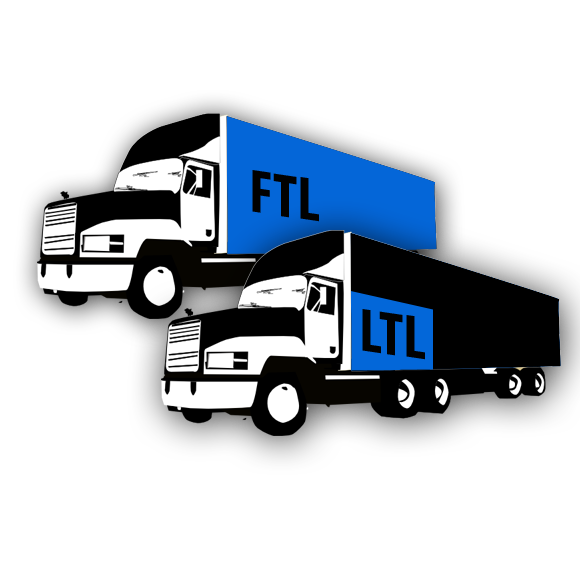
by Marketing | Jul 19, 2017 | News
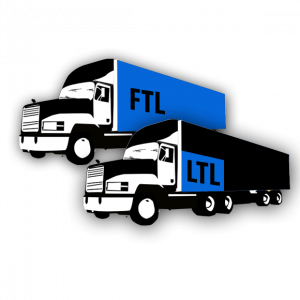 Shipping freight may seem like a very complex process due to the number of options available. It’s important to understand the differences between Full Truckload (FTL) shipping and Less Than Truckload (LTL) shipping because they are two of the most commonly used transportation options within North America. Shippers must consider size, speed, and price when deciding between a FTL versus LTL. Here are the main differences between FTL and LTL shipments to help you decide which shipping method works best for you.
Shipping freight may seem like a very complex process due to the number of options available. It’s important to understand the differences between Full Truckload (FTL) shipping and Less Than Truckload (LTL) shipping because they are two of the most commonly used transportation options within North America. Shippers must consider size, speed, and price when deciding between a FTL versus LTL. Here are the main differences between FTL and LTL shipments to help you decide which shipping method works best for you.
The main differences between FTL and LTL shipments can be broken down into four categories:
Size
The first thing you must take into consideration when shipping freight is the size. The names Full Truckload and Less Than Truckload are self-explanatory and mean exactly what they say. LTL shipments are smaller shipments typically ranging from 100 to 5,000 pounds. These smaller shipments will not fill an entire truck, leaving space for other small shipments. On the other hand, FTL shipments fill most to all of an entire truck and tend to be much larger, often weighing 20,000 pounds or more. Shipments that weigh between approximately 5,000 and 10,000 pounds can sometimes move either LTL or FTL. When such shipments move LTL, they are often referred to as “volume LTL” shipments; and when they move FTL, they are often referred as “partial TL” shipments (read more about Volume LTL and Partial TL here).
Price
Since LTL shipments are smaller and leave room for other shipments, they are cheaper because you will only pay for the space that you use. FTL shipments use most of the entire truck and cost more because you are paying for more space in the truck. The decision between choosing a FTL or LTL is crucial because if you choose the wrong option, you may end up paying for space that you aren’t even using.
Time
If you are pressed on time and need to have something shipped quickly, FTL may be the way to go. Since LTL shipments involve more than just your shipment, they often require multiple stops and transfers before they reach the final destination. Typically, FTL shipments pick up and deliver on the same truck leading to a quicker delivery time.
Handling
Along with how quickly you need a shipment to go out, you must also consider how delicate or high-risk the shipment is. With FTL shipping, your shipment will stay on the same truck and will not be transferred anywhere else. This creates less risk of damaged or missing items when shipping FTL. On the other hand, LTL shipments may switch trucks or be transferred multiple times before delivery, increasing the risk of damaged or missing items.
Choosing the correct shipping method is crucial for saving time and money for your company. If you have LTL or FTL shipping needs, then look no further than Logistics Plus! Contact us today.

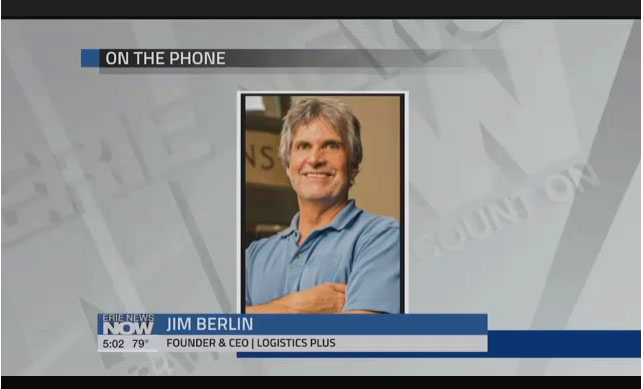
by logisticsplus | Jul 14, 2017 | News
This is a nice television segment from Erie News Now last night regarding our recent expansion announcement. Click the image below to watch a video replay of the news segment.

Additional news coverage by Erie Times-News can be viewed here:
http://www.goerie.com/news/20170714/logistics-plus-to-expand-erie-headquarters
Additional news coverage by YourErie.com can be viewed here:
http://www.yourerie.com/news/local-news/wolf-announces-logistics-plus-expansionjob-increase/764829480
Additional news coverage by Transport Topics magazine can be viewed here:
http://www.ttnews.com/articles/logistics-plus-expand-pennsylvania-headquarters
Additional news coverage by WPSE Radio can be heard here: Clip 1 and Clip 2

by logisticsplus | Jul 13, 2017 | News
FROM PENNSYLVANIA GOVERNOR TOM WOLF NEWSROOM
(see actual news release)
Governor Wolf Announces Logistics Plus, Inc. to Expand and Create 44 New Jobs in the City of Erie

HARRISBURG, Pa. (July 15, 2017) – Today, Governor Tom Wolf announced that Logistics Plus, Inc., a worldwide supply chain management company, will expand its headquarters in the City of Erie, and will create 44 new jobs.
“This expansion in the heart of the City of Erie will bring 44 family-sustaining jobs to a location in the center of the city’s downtown,” said Governor Wolf. “My administration has worked closely with Erie to support its growing business climate and this expansion project is another great investment for the region.”
The expanded facility will allow for the handling of all logistics for clients, from order intake to shipping and installation. Logistics Plus has committed to investing at least $1.2 million into the project, which will create 44 new, full-time jobs and retain 123 more positions statewide.
“It’s very gratifying to be able to create good-paying, fun and interesting jobs with a growing, cutting-edge global company right here in Erie, Pennsylvania,” said Jim Berlin, founder and CEO of Logistics Plus. “Keeping talented people in the Erie area is good for the community and for the local economy.”
Logistics Plus, Inc. received a funding proposal from the Department of Community and Economic Development for $88,000 in Job Creation Tax Credits to be issued after the new jobs are created. The company has also been encouraged to apply for a $2 million low-interest loan from the Pennsylvania Industrial Development Authority.
The project was coordinated by the Governor’s Action Team, an experienced group of economic development professionals who report directly to the governor and work with businesses that are considering locating or expanding in Pennsylvania, with the assistance of the City of Erie’s Department of Economic and Community Development.
Logistics Plus Inc. is a worldwide provider of transportation, warehousing, global logistics, and supply chain solutions. Founded in Erie by local entrepreneur Jim Berlin 20 years ago, Logistics Plus employs over 400 people and has been repeatedly recognized as one of the fastest-growing transportation and logistics companies in the country.
For more information about the Governor’s Action Team or DCED, visit dced.pa.gov.
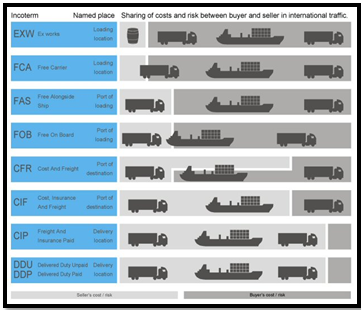
by Marketing | Jul 11, 2017 | News
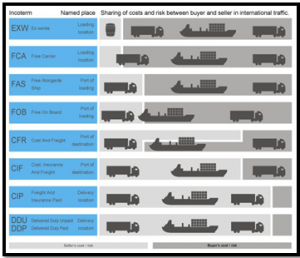 Incoterms® is an abbreviation for “International Commercial Terms.” This term represents a very useful way of communication and it’s actually aimed at reducing confusion between buyers and sellers.
Incoterms® is an abbreviation for “International Commercial Terms.” This term represents a very useful way of communication and it’s actually aimed at reducing confusion between buyers and sellers.
So what is an incoterm? An incoterm represents a universal term that defines a transaction between importer and exporter so that both parties understand the tasks, costs, risks, and responsibilities, as well as the logistics and transportation management from the exit of the product to the reception by the importing country. Incoterms are all the possible ways of distributing responsibilities and obligations between two parties. It is important for the buyer and seller to pre-define the responsibilities and obligations for the transport of the goods.
Here are the main responsibilities and obligations:
- Point of delivery: here, the incoterms defines the point of change of hands from seller to buyer.
- Transportation costs: here, the incoterms define who pays for whichever transportation is required.
- Export and import formalities: here, incoterms define which party arranges for import and export formalities.
- Insurance cost: here, incoterms define who takes charge of the insurance cost.
Advantages of using incoterms:
- As they stand today, there are 11 main terms and a number of secondary terms that help buyers and sellers communicate the provisions of a contract in a clearer way; therefore, reducing the risk of misinterpretation by one of the parties.
- Incoterms govern everything from transportation costs, insurance to liabilities. They contribute to answering questions such as “When will the delivery be completed?” “What are the modalities and conditions for transportation?” and “How do you ensure one party that the other has met the established standards? Having said that, it is important to remember that there are also limits to Incoterms. For example, they do not apply to contractual rights and obligations that do not have to do with deliveries. Neither do they define solutions for breach of contract.
Here’s what you should know about incoterms:
- Ex Works (EXW) – The seller makes the goods available at its location, so the buyer can take over all the transportation costs and also bears the risks of bringing the goods to their final destination.
- Free Carrier (FCA) – The seller hands over the goods into the disposal of the first carrier. After the buyer takes over all the costs, the risk passes when the goods are handed over to the first carrier.
- Free Alongside Ship (FAS) – The seller must place the goods alongside the ship at the named port, the risk of loss or damage to the goods passes when the goods are alongside the ship, and the buyer bears all the costs from that moment on.
- Free on Board (FOB) –The seller must load the goods on board of the ship, nominated by the buyer. Cost and risk are divided when the goods are actually on board.
- Cost and Freight (CFR) –Seller must pay the costs and freight to bring the goods to the port of destination. Although the risk is transferred to the buyer when the goods are loaded on the ship.
- Cost, Insurance and Freight (CIF) –It’s exactly like CFR except that the seller must in addition procure and pay for the insurance.
- Carrier and Insurance Paid to (CIP) –The seller pays for the carriage and insurance to the named destination point, but risk passes when the goods are handed over to the first carrier.
- Delivered Duty Paid (DDP) –The seller is responsible for delivering the goods to the named place in the country of the buyer, and pays all costs in bringing the goods to the destination.
You will find a handy Incoterms 2010 Quick Reference Guide on the Logistics Plus website. Additionally, you can check out our short Introduction to Incoterms 2010 Webinar online.

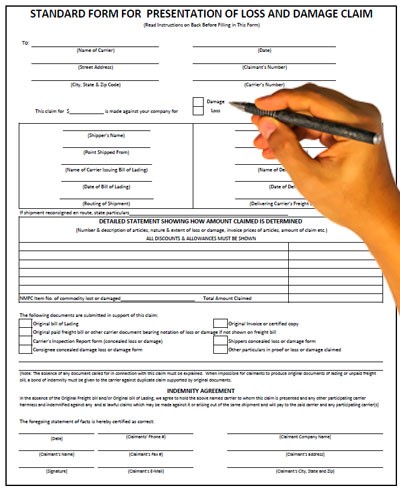
by Marketing | Jun 27, 2017 | News
 Learning how to effectively file a freight claim is important because it will save time and money for your company. A freight claim is a legal demand for the payment of money, stemming from the breach of a contract of carriage. Following specific guidelines and processes is the only way to correctly deal with these claims. There are four essential elements to filing a freight claim:
Learning how to effectively file a freight claim is important because it will save time and money for your company. A freight claim is a legal demand for the payment of money, stemming from the breach of a contract of carriage. Following specific guidelines and processes is the only way to correctly deal with these claims. There are four essential elements to filing a freight claim:
- The shipment must be identified so the carrier can complete an investigation.
- The type of loss or damage must be stated.
- The amount for the claim must be stated.
- A demand for payment by the carrier must be included.
On top of making sure all four elements are included, follow these tips and suggestions to make sure you effectively file your next freight claim:
- Take immediate action
- Taking immediate action is a crucial step of effectively filing a freight claim. Freight claims for loss or damage are generally governed by Title 49, CFR. Claimants must file the claim, in writing, within the time limits specified in the bill of lading or contract of carriage. The time period cannot be more than 9 months (49 USC 14706e) from date of delivery or, if never delivered, the expected delivery date. Unless otherwise agreed upon in a contract, a carrier must acknowledge receipt of a claim within 30 days. The carrier must then pay, offer to compromise or disallow the claim within 120 days or provide status reports every 60 days thereafter. If the carrier fails to abide by these periods, it should be notified that it is violating the FMCSA claim regulations. Furthermore, per the National Motor Freight Traffic Association, concealed damage must be reported to the carrier within 5 days. After 5 days, if the carrier has not been alerted of the damage, they retain the right to deny the claim. The customer then becomes responsible for providing proof that the damaged or missing items were the result of poor actions on behalf of the carrier. If the customer is unable to provide such proof, the claim will be considered invalid.
- Attempt to mitigate the damages
- A responsibility that all parties of the shipping process share is attempting to mitigate damages. It is your responsibility to give a good faith effort to salvage damaged products unless you consider them to be totally or substantially useless and of no good.
- Make supporting documentation available
- Including supporting documentation is necessary for correctly filing a freight claim. If available, you should include the original bill of lading (BOL), the paid freight bill, inspection reports, notification of loss, copies of request for inspection, invoices, waivers, and other appropriate documents such as temperature reports and weight certificates. The more information you have regarding the freight, the more effective your claim will be.
- Create a detailed description of the losses or damages
- A detailed description of the loss or damage should be properly displayed. The claimant should include the number of items damaged, the type of damage, the value of each unit, and the net loss which results in the total amount of the claim. For example:
- 15 boxes of cell phones – (water damaged) @ $500 each: $7,500
- 5 boxes of cell phone cases – (crushed) @ $100 each: $500
- Total Damages: $8,000
- Amount Salvaged: $250
- Total Claim Amount: $7,750
- The role of 3PLs, brokers or intermediaries
- Many shippers use the services of intermediaries such as brokers or 3PLs (like Logistics Plus) to arrange with carriers for the transportation of their goods. Ordinarily a broker or 3PL does not have any liability for loss or damage since it is not a carrier and does have physical possession or control over the shipments. As a value-added service, Logistics Plus will generally offer to handle the filing and/or collection of claims on behalf of our customers. We also make available the various documents shippers need to file claims. This should not be confused with an assumption of liability, however; and claims must still be filed in your name (not that of Logistics Plus).
If you frequently ship LTL freight or truckload shipments, freight losses and damages are almost inevitable at some point during the process. That’s why it’s important to have an experienced and caring freight management partner on your side. When you work with Logistics Plus, we’ll gladly assist you with the filing or processing of your freight claims, and we’ll go to bat for you with the carriers to best represent your interests. Contact us today to learn more.


by logisticsplus | Jun 26, 2017 | News
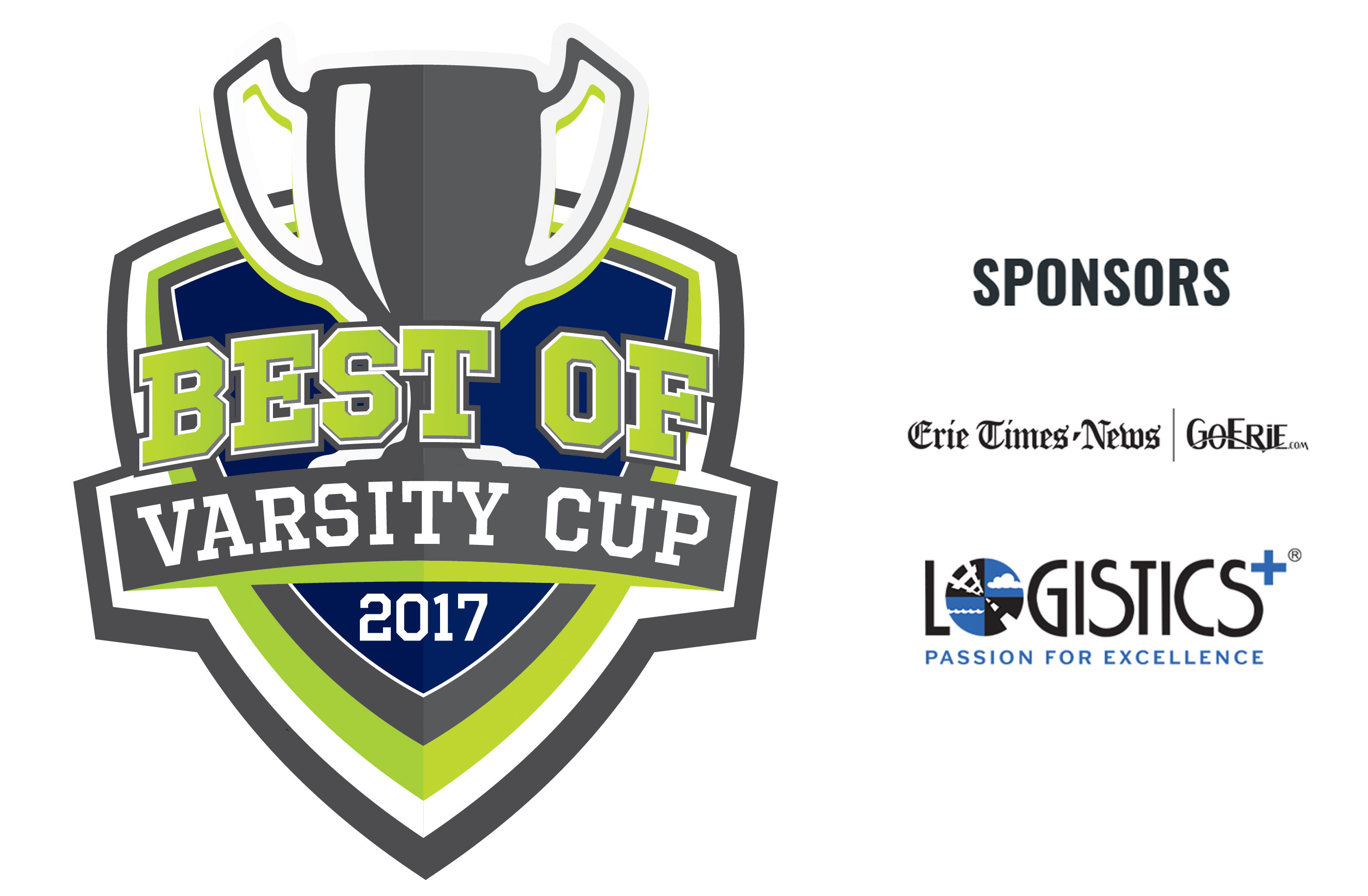 It was such an honor for Logistics Plus to have sponsored 2017 Best of Varsity Cup event which culminated with the awards banquet Friday evening at the Erie Bayfront Convention Center. Jim Berlin founded Logistics Plus 20 years ago with one guiding principle: Passion For Excellence. That passion has helped transform Logistics Plus from what it was in 1996: Three employees and one customer … to what it is today: A global company, based right here in Erie, with over 400 employees serving thousands of customers all around the world. Clearly, the district 10 student-athletes honored Friday evening also have a strong passion for excellence. We hope these student-athletes keep that same passion and competitiveness as they move on to the next phases of their lives. Whether that involves athletics, education, starting a career, or raising a family – having a passion for what you do will ensure your continued success in life.
It was such an honor for Logistics Plus to have sponsored 2017 Best of Varsity Cup event which culminated with the awards banquet Friday evening at the Erie Bayfront Convention Center. Jim Berlin founded Logistics Plus 20 years ago with one guiding principle: Passion For Excellence. That passion has helped transform Logistics Plus from what it was in 1996: Three employees and one customer … to what it is today: A global company, based right here in Erie, with over 400 employees serving thousands of customers all around the world. Clearly, the district 10 student-athletes honored Friday evening also have a strong passion for excellence. We hope these student-athletes keep that same passion and competitiveness as they move on to the next phases of their lives. Whether that involves athletics, education, starting a career, or raising a family – having a passion for what you do will ensure your continued success in life.
You can read the final recap from Erie Times-News online at GoErie.com. Also included here are some photographs of Logistics Plus employees at the event (Flickr slide show below), and a couple videos from WICU 12 via ErieNewsNow.com.
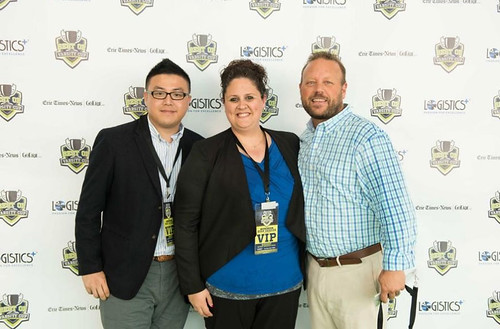

 Shipping freight may seem like a very complex process due to the number of options available. It’s important to understand the differences between Full Truckload (FTL) shipping and Less Than Truckload (LTL) shipping because they are two of the most commonly used transportation options within North America. Shippers must consider size, speed, and price when deciding between a FTL versus LTL. Here are the main differences between FTL and LTL shipments to help you decide which shipping method works best for you.
Shipping freight may seem like a very complex process due to the number of options available. It’s important to understand the differences between Full Truckload (FTL) shipping and Less Than Truckload (LTL) shipping because they are two of the most commonly used transportation options within North America. Shippers must consider size, speed, and price when deciding between a FTL versus LTL. Here are the main differences between FTL and LTL shipments to help you decide which shipping method works best for you.









 It was such an honor for Logistics Plus to have sponsored 2017 Best of Varsity Cup event which culminated with the awards banquet Friday evening at the Erie Bayfront Convention Center. Jim Berlin founded Logistics Plus 20 years ago with one guiding principle: Passion For Excellence. That passion has helped transform Logistics Plus from what it was in 1996: Three employees and one customer … to what it is today: A global company, based right here in Erie, with over 400 employees serving thousands of customers all around the world. Clearly, the district 10 student-athletes honored Friday evening also have a strong passion for excellence. We hope these student-athletes keep that same passion and competitiveness as they move on to the next phases of their lives. Whether that involves athletics, education, starting a career, or raising a family – having a passion for what you do will ensure your continued success in life.
It was such an honor for Logistics Plus to have sponsored 2017 Best of Varsity Cup event which culminated with the awards banquet Friday evening at the Erie Bayfront Convention Center. Jim Berlin founded Logistics Plus 20 years ago with one guiding principle: Passion For Excellence. That passion has helped transform Logistics Plus from what it was in 1996: Three employees and one customer … to what it is today: A global company, based right here in Erie, with over 400 employees serving thousands of customers all around the world. Clearly, the district 10 student-athletes honored Friday evening also have a strong passion for excellence. We hope these student-athletes keep that same passion and competitiveness as they move on to the next phases of their lives. Whether that involves athletics, education, starting a career, or raising a family – having a passion for what you do will ensure your continued success in life.